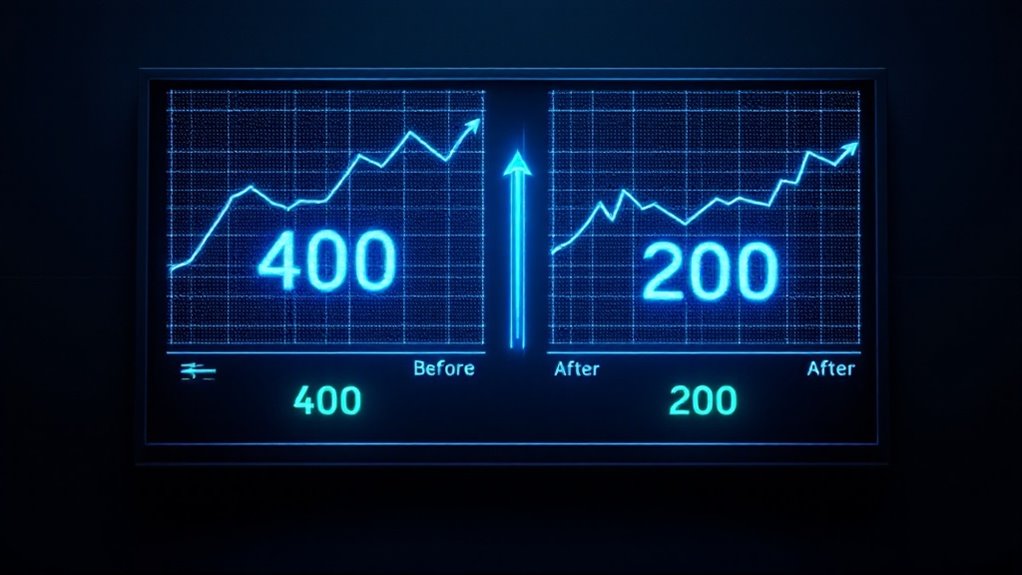Successful stock investing requires a disciplined approach combining fundamental analysis, technical indicators, and strategic portfolio diversification. While AI and technological advances reshape market dynamics, investors must balance growth opportunities with risk management across sectors. Current market conditions demand careful attention to both established value stocks and emerging growth potential, while maintaining emotional discipline during volatility. Understanding key economic factors and maintaining flexibility in investment strategies opens doors to ideal returns in today's complex market environment.

Maneuvering the complex landscape of stock market investing demands a sophisticated understanding of multiple intersecting factors in early 2025, from the transformative impact of artificial intelligence to the persistent influence of macroeconomic conditions. The stock market has experienced notable fluctuations, with tech giants like Nvidia and Tesla driving significant movements while the broader S&P 500 demonstrates varying degrees of volatility.
This dynamic environment necessitates a careful balance between growth opportunities and risk management, particularly as the market enters what traditionally represents a more subdued phase of the bull cycle. The recent drop to 57.9 sentiment index highlights growing consumer wariness about economic conditions.
The integration of artificial intelligence across industries has emerged as a pivotal force shaping market trajectories, reminiscent of the internet's revolutionary impact on stock valuations in previous decades. While mega-cap technology firms continue to dominate market growth, savvy investors recognize the importance of diversifying beyond tech sectors, particularly as normalized inflation and interest rate policies create opportunities in traditional value stocks and cyclical sectors.
AI's market influence mirrors the internet revolution, while diversification beyond tech becomes crucial amid evolving economic conditions.
Current market conditions demand a disciplined approach to stock trading, with careful attention paid to both technical indicators and fundamental analysis. Investors must navigate the complex interplay between geopolitical tensions, regulatory environments, and economic policies, all while maintaining a strategic focus on sectors demonstrating strong shareholder yield and sustainable growth potential. A comprehensive portfolio diversification strategy across multiple asset classes can help protect against market-specific risks while optimizing potential returns.
The implementation of tariffs and evolving trade agreements adds another layer of complexity to investment decisions.
Looking forward, projections suggest potential for high single-digit to mid-double-digit returns in the S&P 500 under favorable conditions, though such outcomes remain heavily dependent on economic growth and external factors.
The judicious investor will maintain a balanced portfolio, incorporating both established value stocks and carefully selected growth opportunities, while remaining vigilant to market signals and maintaining sufficient flexibility to adjust positions as conditions warrant.
Success in this environment requires not only technical expertise but also the emotional discipline to withstand market volatility while adhering to well-defined investment strategies.
Frequently Asked Questions
How Do I Choose a Reliable Stockbroker?
Selecting a reliable stockbroker requires careful evaluation of multiple criteria.
Essential factors include verifying regulatory compliance and registration with relevant authorities, examining fee structures and hidden charges, evaluating platform functionality and available tools, and scrutinizing customer service quality.
Thorough background checks, coupled with analysis of client feedback and service offerings, help guarantee the chosen broker aligns with individual investment needs while maintaining professional standards and transparency.
What's the Best Time of Day to Trade Stocks?
The most advantageous trading window occurs between 9:30 am and 11 am ET, when market liquidity peaks and significant price movements create favorable opportunities.
However, inexperienced traders should avoid the volatile first 15 minutes.
The final hour of trading (3-4 pm ET) offers another prime window, as institutional investors close positions and volume surges.
Mid-day trading typically presents fewer opportunities due to reduced liquidity and activity.
Can I Buy Stocks Without a Broker?
Investors can indeed purchase stocks without a traditional broker through several alternative methods, including Direct Stock Purchase Plans (DSPPs) and Dividend Reinvestment Plans (DRIPs), which enable direct company share purchases.
Online platforms and mobile investment apps have also emerged as viable broker-free options, though these approaches typically require more independent research and active portfolio management.
While avoiding broker fees is advantageous, investors should consider the trade-off of foregoing professional guidance and potentially limited market access.
How Are Stock Dividends Taxed?
Stock dividends face different tax treatments based on their classification.
Qualified dividends receive preferential tax rates of 0%, 15%, or 20%, depending on the investor's income bracket, while ordinary dividends are taxed as regular income.
To qualify for lower rates, investors must hold shares for more than 60 days within a 121-day period around the ex-dividend date.
Stock dividends, unlike cash dividends, aren't taxed until the shares are sold.
What Happens to My Stocks if the Company Goes Bankrupt?
When a company declares bankruptcy, stockholders face significant risks of losing their entire investment.
In Chapter 11 reorganization, shares typically plummet in value and may continue trading over-the-counter, though recovery prospects remain slim.
In Chapter 7 liquidation, shares become fundamentally worthless.
Common stockholders stand last in the creditor hierarchy, receiving payment only after secured creditors, bondholders, and preferred shareholders are fully compensated, which rarely occurs in bankruptcy proceedings.









